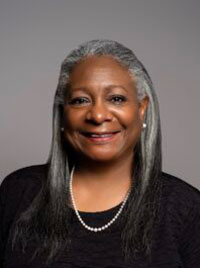Challenges Currently Facing University Anesthesiologistsby Valerie E. Armstead, MD, DABA, FASA University anesthesiologists encounter a variety of challenges that can hinder their professional effectiveness and overall satisfaction within their roles. One significant challenge is the increasing demands for academic productivity alongside clinical responsibilities. The shrinkage of our work force mean faculty members often find themselves balancing the need to produce research, teach medical students and residents, and provide high-quality patient care. This multifaceted role can lead to burnout, making it essential for institutions to create supportive environments that prioritize wellness and provide resources for managing these competing demands. Another challenge faced by university anesthesiologists is the evolving landscape of healthcare regulations and reimbursement models given the political climate. Changes in policies can create uncertainty regarding funding for research and clinical practices. Anesthesiologists must stay informed about these developments to adapt their strategies accordingly. Organizations that offer comprehensive training and resources related to regulatory compliance and financial management can help their members navigate these complexities, ultimately leading to enhanced member retention and engagement. Social media engagement also presents both opportunities and challenges for university anesthesiologists. While these platforms can facilitate networking and professional development, they can also contribute to information overload and the spread of misinformation. University anesthesiologists need guidance on how to effectively utilize social media for professional purposes while maintaining their personal boundaries. By providing clear guidelines and training on best practices for online engagement, associations can empower their members to leverage social media for collaboration and knowledge sharing without compromising their well-being. Personalized member experiences are critical for fostering a sense of belonging among university anesthesiologists. However, creating tailored experiences can be challenging due to the diverse backgrounds, interests, and needs of the membership base. Organizations must invest in data analytics tools to gather insights on member preferences and engagement patterns. This information can inform the development of targeted programs and resources that resonate with members, enhancing their overall experience and increasing retention rates. Lastly, the organization of events and networking opportunities remains a crucial aspect of member engagement. However, ensuring these events are relevant and valuable can be a logistical challenge. The AUA strived to achieved this for the 2025 annual meeting. University anesthesiologists often have varying schedules and commitments that can attendance difficult. The main portion of the meeting being a weekend event addresses the attendance issue by allowing greater accessibility. By prioritizing flexibility in event planning and actively soliciting member feedback on preferred formats and topics, the MEB hopescreate opportunities for connection and professional development. Author
|


